At
Dallington School
, we understand that our students are growing up in an era profoundly shaped by technology in education and artificial intelligence. We live in a time of constant transformation, where the future holds great opportunities — but also new challenges.
That is why we believe that teaching digital and technological skills is just as important as fostering a responsible and conscious use of them. Our commitment to educational technology goes far beyond teaching tools; it focuses on shaping critical, creative, and well-balanced citizens who can navigate and contribute thoughtfully to the rapid evolution of new technologies in education.
The Impact of Technology on Childhood: A Call for Reflection
This year, we have chosen to share with our school community a book we believe is particularly relevant: The Anxious Generation, by Jonathan Haidt. Grounded in solid scientific evidence, this book explores the emotional and psychological effects of early and unsupervised exposure to technology on children and adolescents.
One of the most powerful reflections Haidt offers is the paradox between overprotection in the real world and excessive freedom in the virtual one. While, as parents, we are becoming increasingly cautious about physical dangers, we often allow unlimited access to the digital world — which, according to the data, can be far more harmful, especially in the early years.
Our Digital Map: Purposeful Technology at Every Stage
At Dallington School, we have developed a Digital Map to guide families on the appropriate use of technology according to each child’s developmental stage. This guidance is grounded in scientific evidence and our educational understanding of childhood development.
During the Early Years and Primary stages, the less screen time, the better
We firmly believe that children should play, interact, spend time outdoors and learn to resolve conflicts naturally through real-life experiences. At this age, the brain is still maturing, making it essential to provide an environment rich in physical, social and unstructured play opportunities.
That said, it is perfectly normal for children at this stage to occasionally watch a series or a film. What matters is that this is done in moderation, ideally with adult involvement, and with parental controls activated on devices, ensuring content is age-appropriate.
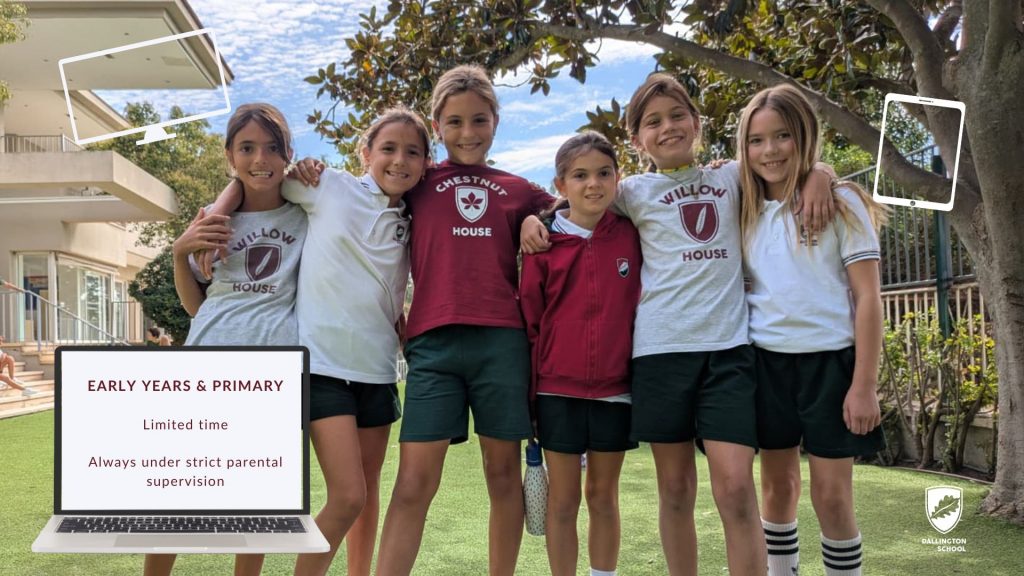
The same applies to internet use for research or exploration: parental control is vital. Today, access to pornography is alarmingly easy, and often starts accidentally or out of simple curiosity — an innocent search for a curious word can, without proper filters, lead to highly inappropriate content.
The average age of first exposure is, worryingly, just eight years old. As adults, we must be fully aware of this risk and act responsibly to protect children’s emotional and cognitive development.
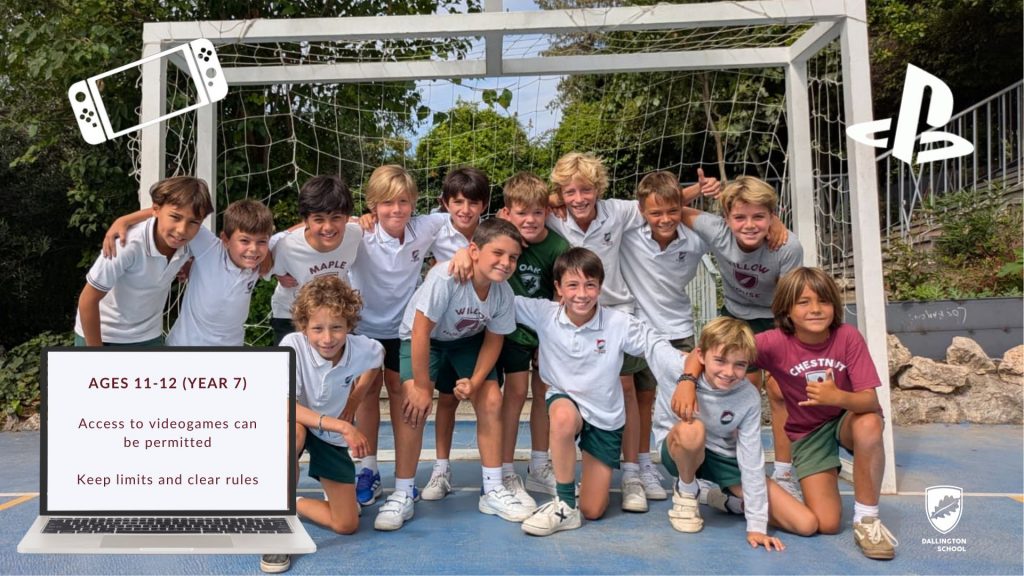
End of Primary and Secondary: Towards a Balanced Technological Education
By the end of Primary, video game consoles can be introduced as a form of occasional entertainment, always with clear boundaries and supervision. When used appropriately, they can even serve as a way to connect with peers — but moderation is key. Excessive use can have a negative impact on physical activity and real-world social interaction.
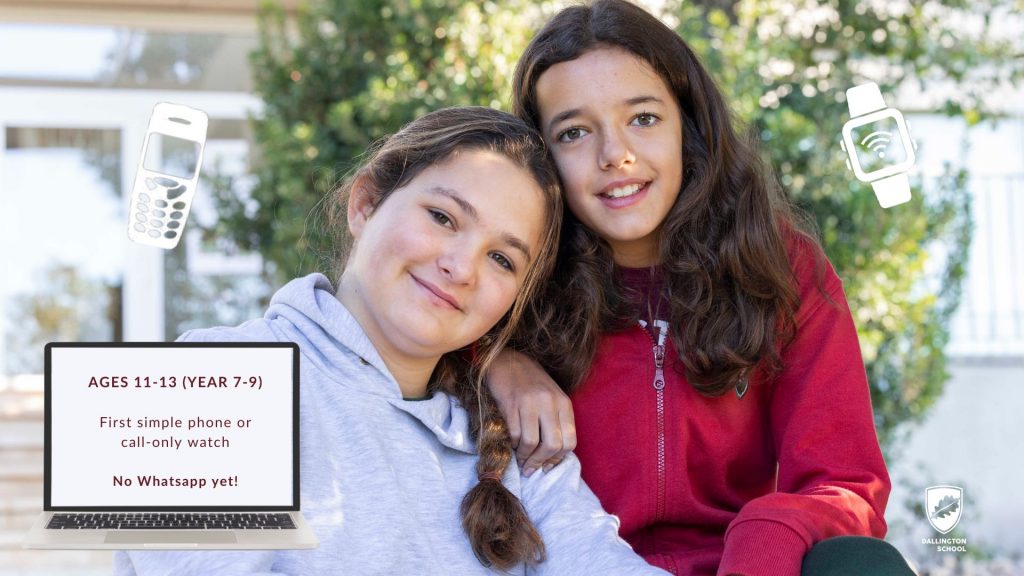
At the beginning of Secondary, we consider it appropriate for pupils to have access to a mobile phone, ideally without internet connection, as a tool to support their growing independence, safety when travelling alone, or staying in touch with their families.
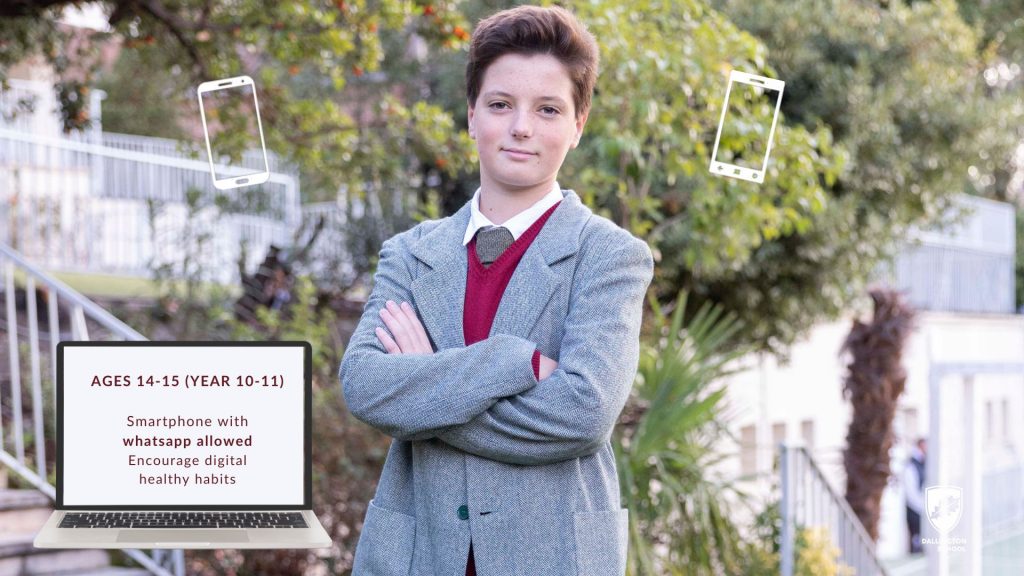
However, we do not recommend the use of social media before the age of 16. It is only around this age that key executive functions — such as self-regulation, concentration, and attention — are more fully developed.
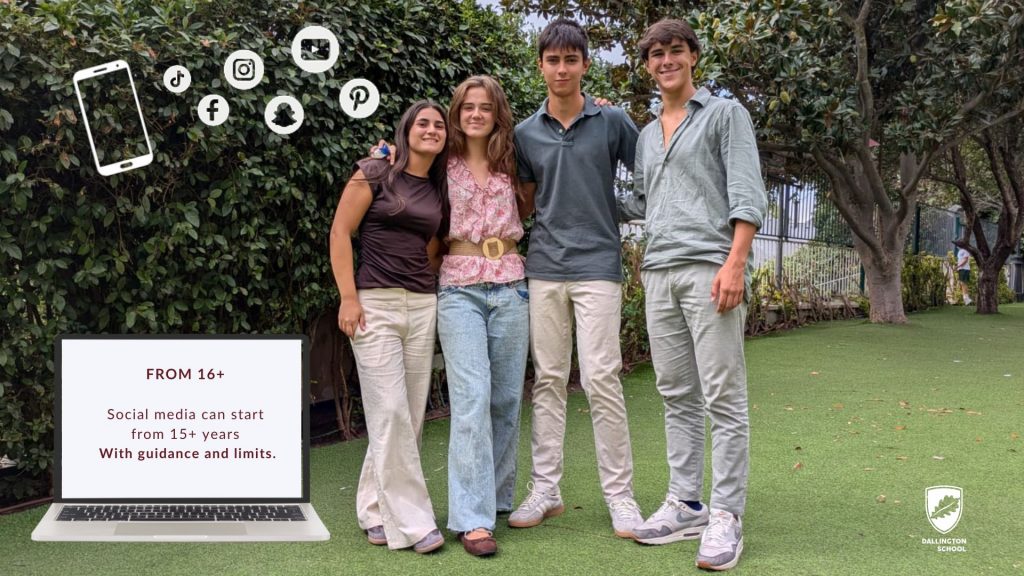
Young people are also more emotionally mature and better equipped to navigate online content critically and responsibly. Even so, adult guidance remains essential: giving more autonomy does not mean stepping away. Open communication and a trusting relationship continue to play a vital role.
Finally, it is important to remember that technology use can impact vital aspects of everyday life — including sleep, time outdoors, physical activity and social interaction. For this reason, at every stage, it is essential to maintain a balanced lifestyle and healthy routines.
Our Digital Map is not intended to impose rules, but to support families in making informed decisions, aligned with their children’s wellbeing, healthy development and mental health.
At Dallington School , we embrace a human-centered vision of technology in education. We believe that the future is not only about mastering digital tools, but about using them with judgment, ethics, and balance. Only in this way can we truly harness the full potential of new technologies in education—without losing what matters most: the human and emotional development of our children.
María y Paola Recio Zapata
Dallington School Directors and Psychologists